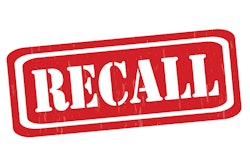There's plenty of confusion around safety management systems. Let's debunk a few of the big myths.
Myth No. 1: Safety management systems are only for big companies.
Fact: Safety management systems form a flexible framework that works for any size business.
The core components of a safety management system include safety policies, incident investigations, written procedures, hazard assessments, worker training and compliance documentation. Most SMS also incorporate management commitment and the participation of workers. These are all aspects of familiar OSHA regulations and principles of risk management.
The management system provides the mechanism for building and guiding the safety program. And it is unique to your company. This means it is a flexible framework that you can use as a model to guide your safety program and help you understand how to identify, mitigate and respond to risk.
Myth No. 2: Safety management systems require expensive software.
Fact: You don't need software to run a safety management system.
A SMS is also a safety measurement system. Metrics in safety management systems can be applied to predict accidents or identify areas where companies are likely to face hazards. For large organizations, or those dedicated to Process Safety Management, EHS software might be a necessity due to the complexity of the company.
However, in small to medium-sized companies, it is entirely possible to manage these aspects with an in-house documentation system and dedicated safety leadership. For example, companies of every size conduct routine audits. Regardless of the scale of the company, data is collected, analyzed and acted upon. What this looks like at a large company is entirely different from a small one, where it can be as simple as a safety committee meeting and discussing the audit results. The bottom line is that it doesn't take a costly, cloud-based platform to have SMS contributing to the health of your business.
Myth No. 3: SMS are about discipline and managing behavior.
Fact: Safety management systems will help you focus on the big picture.
Your SMS should free you to focus on being proactive, rather than reactive. The emphasis of SMS is to ensure that potential hazards are identified and addressed. Without a safety management system in place, employers will often base the health of the company safety program on 300-Log data and Workers’ Comp mod rates. These give a history of past events, but don’t predict possible (and costly) future hazards.
As SMS is implemented, the culture of the business changes. Employees no longer see workplace safety as list of rules to blindly follow. Instead, they begin looking for ways to improve the safety and health of the organization, and start pushing toward the golden standard: continuous improvement.
This blog originally appeared on The Safety Record here.



















